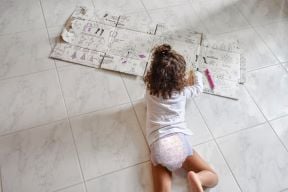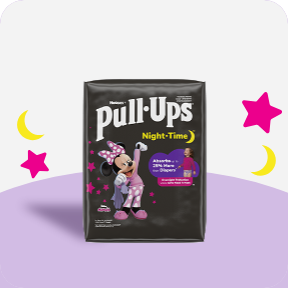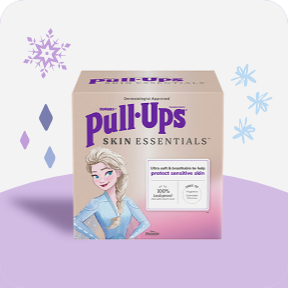When Do Babies & Toddlers Start Talking
When Do Babies Start to Talk?
Early stages of talking occur shortly after birth. Most babies say their first words between 12 months and 18 months of age. Don’t be alarmed if your child doesn’t follow these exact patterns—it’s normal for language development to vary in youngsters. Here’s what’s typical for many toddlers when it comes to talking:
- From birth to 3 months, babies make cooing sounds
- From 4 months to 6 months, babies laugh, giggle, and make playful “babbling” sounds
- By 12 months, babies will make a long string of sounds like da-da-da-da or mi-mi-mi-mi
- From 12 months to 18 months+ of age, many toddlers will start to say single words related to familiar objects or faces such as mama, dada, dog, or ball
Language Development Milestones After Age 1
Many babies tend to continue their language development after age 1 as follows:
- Single words between 12 months to 18 months of age
- Speaking about 10 to 50 words by 18 months of age
- Saying two-word phrases such as “daddy go” and about 50 words by age 2 years old
- Three-word phrases and words to identify almost everything by age 3 years old
- Each year thereafter, you can expect to hear longer sentences as they grow
When Baby’s Speech is Delayed
If you were told your baby has problems hearing or has a particular medical condition, their speech may be delayed. Be sure you speak with your little one’s healthcare provider about how to best support your baby’s language development. Your sweet child may need help in developing language if they don’t meet these typical baby speech milestones:
- Doesn’t babble by 7 months
- Doesn’t respond to their name by 9 months
- Doesn’t show interest or try to communicate by 15 months
- Doesn’t imitate different sounds and words by 18 months
- Doesn’t follow simple and direct instructions by 18 months
- Doesn’t use word combinations by age two, such as "mama go"
- Doesn’t identify people and objects in their environment
Other possible signs of language development problems in very young children may include:
- Sudden loss of speech and language skills
- Inability to understand words by age 2 ½ to 3 years old
Bilingual Children
There is a common misconception that children who will grow up learning two languages at home will have delayed language development. There is little to no evidence to support this myth. Learning words in two languages counts towards the total word count. For example, if your child learns water and aqua, this counts as two words!Talk, Talk, Talk at Home
Create an engaging environment that supports talking, singing, and so forth, as this is critical in assisting your child with language development. Talk to your little guy or gal as you’re driving in the car, riding a city bus, taking a walk in the woods, or settling into a warm sudsy bedtime bath. Ensure your child is growing up in an environment rich with communication and where people interact with them often.Activities to Support Language Development
Did you know that toys can support your child’s language development? Cause-and-effect toys are ideal for helping your child develop their thinking skills, which are essential for language growth. If using a smart device app, take time to interact with your child and carry the experience over to real life. Face-to-face interaction is vital for language development.Teach Your Baby to Talk
The best way to teach your baby to talk is to spend a lot of time talking face-to-face and interacting with your baby using real words as your speech. Babies learn speech by imitating and watching facial expressions. The following are tips to help you teach your baby how to talk:
- When your baby coos, ask "Are you sleepy?"
- Smile back when your baby smiles at you or others
- Read a book to your baby emphasizing the words and sounds of the words
- Sing nursery rhymes with or to your baby
- Play with your baby using various types of toys, including balls and pots and pans
- Create conversation by teaching them how to put words together
- Use nouns instead of pronouns (e.g., mommy versus she)
- Give your baby time to respond in the form of sounds, words, or movements
- Enunciate words clearly – have fun and exaggerate them in silly ways just to watch your baby giggle
Talking to your baby is critical to supporting their speech and language development. The more you can speak and interact, the better support they have for language development. Use visual cues when communicating with your baby, which supports language development. It is important to note each child develops uniquely. If you have questions or concerns about your child’s language development milestones, please be sure to reach out to their healthcare provider for additional information and support.









